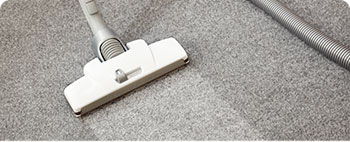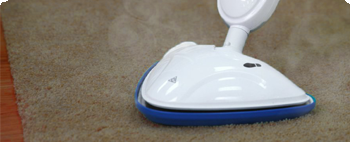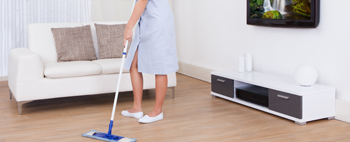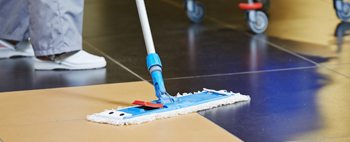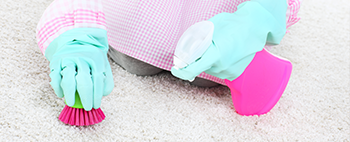Crafting a Pet-Loving Yet Odor-Free Home
Posted on 15/09/2025
Crafting a Pet-Loving Yet Odor-Free Home: The Ultimate Guide
Pet ownership brings immeasurable joy, companionship, and warmth to households across the globe. However, while pets enrich our lives, they may also leave behind odors that can be challenging to manage. Those determined to maintain a welcoming and fresh-smelling living space often wonder: Is it truly possible to have a loving relationship with furry friends and an odor-free home? The answer is a resounding yes! You can absolutely design a home that's as delightful for your pets as it is inviting for guests without sacrificing cleanliness or aromatics. This comprehensive guide explores innovative methods, product recommendations, and professional tips for crafting a pet-friendly yet odor-free home.
Understanding the Sources of Pet Odor
Before combatting unwanted smells, it's crucial to recognize where pet odors originate. Pets, while adorable companions, can introduce odors through several means:
- Fur and dander: Even with regular grooming, pets shed dander and fur, which can trap odors in fibers and surfaces.
- Accidents: Occasional mishaps--be it urine, feces, or vomit--significantly contribute to unpleasant smells.
- Pet bedding and toys: Items pets use frequently can absorb smells (especially if left unwashed).
- Saliva and grooming: Natural pet grooming, licking, and drooling can create a unique odor profile in your home.
- Wet pets: After baths, rain, or swimming, damp fur may release a musty scent.
By pinpointing these sources, you're better prepared to implement an effective odor prevention and removal strategy.
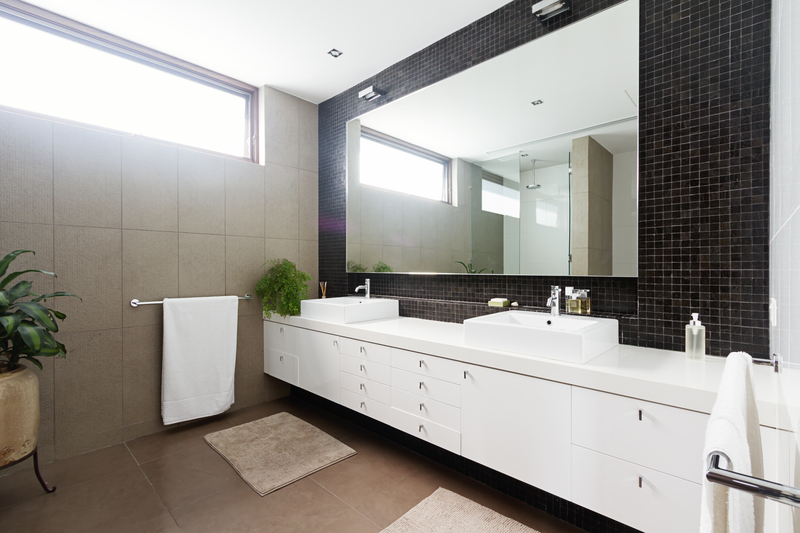
Key Principles for an Odor-Free, Pet-Inclusive Home
1. Establish a Cleaning Routine
The backbone of any odor-free household, especially one with pets, is a consistent and thorough cleaning routine. Here are the best practices:
- Launder pet bedding, toys, and blankets weekly. Use pet-safe detergents to wash items regularly, preventing odor buildup.
- Vacuum floors and furniture frequently. Invest in a high-quality vacuum with a HEPA filter to remove dander, fur, and dust. Vacuum at least twice a week.
- Wipe down surfaces. Daily wiping of counters, doors, and handles prevents oils and dander accumulation.
- Clean litter boxes and cage habitats daily. Dispose of waste promptly and scrub containers with odor-neutralizing cleaners.
- Address accidents immediately. Use enzymatic cleaners to break down organic matter and prevent lingering smells.
2. Opt for Odor-Resistant Materials and Design
Furnishing and designing your home for pets doesn't mean sacrificing style. Choose materials and finishes that resist odor and are easy to clean:
- Hard-surface floors (like tile, laminate, or hardwood) are far easier to maintain than carpet, which traps odors.
- Washable slipcovers and throws protect furniture and simplify washing.
- Area rugs should be machine washable or crafted from synthetic fibers resistant to odor retention.
- Choose paints that are stain-resistant and easy to wipe down, especially in high-traffic pet areas.
3. Focus on Pet Hygiene
A clean pet equals a cleaner, less-odorous home. Make pet grooming an essential part of your schedule:
- Bathe pets as appropriate for their breed and age, using pet-safe shampoos to control dander and natural oils.
- Brush coats regularly to reduce shedding and distribute oils to maintain a healthy, less-smelly coat.
- Maintain dental hygiene. Bad breath is a significant source of "pet smell." Brushing teeth and providing dental treats go a long way towards freshness.
- Keep nails and paws clean. Paws pick up debris and bacteria--wipe them after outdoor walks or play.
Targeted Odor Removal Solutions
1. Use Enzymatic & Pet-Odor Neutralizing Cleaners
Standard household cleaners often mask odors without eliminating the source. For a genuinely odor-free pet home, enzymatic cleaners are your best friend. They:
- Break down organic stains (like urine, feces, vomit) at the molecular level, erasing both residue and odor.
- Prevent repeat accidents by removing invisible scent markers that attract pets to soil the same spot.
- Safe for most surfaces, including carpets, upholstery, and most hardwood floors.
2. Air Purification for Freshness
An effective method for maintaining a pet-friendly and odorless space is investing in air purification:
- HEPA filter air purifiers trap pet dander and microscopic particles responsible for odors and allergies.
- Activated charcoal filters remove smells from the air, not just particulates.
- Dehumidifiers reduce moisture, minimizing the musty "wet dog" smell--especially in humid climates.
3. Maximize Natural Ventilation
Letting in fresh air is an age-old, effective strategy for odor management. Open windows and run exhaust fans daily to circulate air and dissipate smells.
- Position fans to direct stale air out of frequently used pet areas.
- Utilize air circulation to prevent "stuffiness" and remove musty pet odors.
4. Harness the Power of Baking Soda & Vinegar
Natural remedies can work wonders for creating an odor-neutral pet environment:
- Baking soda, sprinkled on carpets or fabric furniture before vacuuming, naturally absorbs odors.
- White vinegar (diluted in water) is perfect for mopping floors or wiping surfaces, neutralizing pet smells without harsh chemicals.
Preventing Future Odor Buildup
1. Create Designated Pet Areas
Establishing specific zones for pets helps contain odors and simplifies the cleaning process:
- Dedicated feeding and sleeping spots make it easier to keep food spills and hair accumulation in check.
- Use washable rugs or mats in entryways and near litter boxes to collect debris and contain odors.
- Gate off rooms where pets aren't allowed to limit their scent to primary hangout areas.
2. Stay on Top of Litter Boxes and Waste Disposal
- Clumping, odor-control litters help prevent the spread of urine and fecal odors.
- Automatic litter boxes scoop regularly, keeping smells at bay between deep cleans.
- Enclosed trash cans with liners reduce escaping odors from daily waste removal.
3. Select Low-Odor Pet Products and Diets
Some pet foods can lead to stronger-smelling waste or breath. Consider:
- High-quality, digestible food that suits your pet's specific needs.
- Limited-ingredient diets to reduce digestive issues and gas.
- Fresh water changed daily for hydration and health.
Additionally, pet-safe grooming sprays and dry shampoos can extend the freshness of your pet between baths while upholding their comfort.
Smart Home Technology for Modern Odor Control
Today's technological advances have transformed the way pet parents combat odor. Consider integrating these solutions for a truly pet-loving yet odorless home:
- Robotic vacuums: Programmed to clean up fur and dander daily with minimal effort.
- Smart air purifiers: Adjust filtration based on detected pollutant levels and can be monitored via smartphone apps.
- Motion-detecting spray dispensers: Automatically release odor-neutralizing sprays in areas like litter box rooms or doggy corners.
Pet Odor Control Mistakes to Avoid
Even the most diligent pet parents can make common missteps when tackling odors:
- Using fragrance sprays to mask smells, rather than eliminating them at the source.
- Ignoring invisible stains, which continue to produce odor over time.
- Letting pet bedding or toys go unwashed, turning them into hidden odor reservoirs.
- Setting cleaning on "autopilot" instead of periodically deep cleaning all surfaces and upholstery.
When to Call in the Professionals
Sometimes, embedded odors require expert intervention:
- Pet urine penetrated deeply into floors or subflooring--professionals have specialized tools and solutions for extraction and disinfection.
- Persistent air quality issues after home remedies may need a full HVAC duct cleaning.
- Stubborn odor after repeated cleaning-professional grade ozone machines or foggers might be necessary (always ensure pet safety before use).
Embracing Both Pets and Freshness: It's Possible!
A pet-adoring atmosphere and a scent-neutral, inviting home aren't mutually exclusive. With proactive steps, the right products, and a bit of ongoing care, households can enjoy all the benefits of pet companionship minus the smells.
- Adopt a holistic approach, combining routine cleaning, smart design choices, technology, and a focus on pet well-being.
- Don't skimp on quality tools--invest in vacuums, cleaners, and purifiers designed specifically for pet households.
- Treat odors at the source, not just the symptoms, for long-lasting results.
Ultimately, by dedicating a little extra effort and staying vigilant, your home can exude exactly the atmosphere you aspire to: warm, pet-friendly, and perpetually fresh.

Frequently Asked Questions: Odor-Free Pet Homes
How often should I clean my house when I have pets?
Daily spot cleaning and weekly deeper cleaning are ideal for most pet-loving homes. Increase frequency if you have multiple pets or heavy shedders.
What's the best air purifier for homes with pets?
Look for HEPA filters and activated carbon layers. Models from reputable brands like Dyson or Levoit are popular among pet owners.
Can professional cleaning get rid of pet urine smells for good?
*Professional deep cleaning*--especially with enzymatic treatments and extraction equipment--can often eliminate even tough urine odors permanently.
Conclusion: Building a Truly Pet-Welcoming, Odor-Free Household
Maintaining a pet-filled yet odorless home is not only possible--it's absolutely within reach. By addressing both pet care and environment management holistically, you can ensure your home reflects the best of both worlds: the unconditional love of pets and the clean, inviting atmosphere your family and guests cherish. Make it your mission to blend affection with cleanliness, and both your pets and your nose will thank you!








